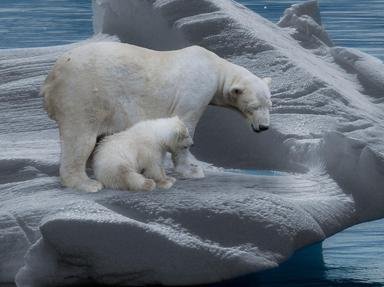Quiz Answer Key and Fun Facts
1. A Frenchman was hunting in northern Greenland and spotted an animal. "A-ha! Civet de lievre for dinner tonight." What animal, Lepus arcticus, had he spotted?
2. The Adélie penguin feeds mostly on krill and small fish, but what other creature does it like to snack on, if one happens to be floating past?
3. Some species of whale do not have teeth. Instead, they have baleen which is like a curtain that sieves seawater, trapping krill and small fish inside the whale's mouth. Once known as whalebone, what is baleen comprised of?
4. Below are four predators of penguins, but which one has been spotted as the penguins' main predator?
5. Which of the following, Adélie penguins or bearded seals, are a major component of a Polar bear's diet?
6. The south polar skua (Stercorarius maccormicki), like its more northerly relatives, has kleptoparasitic feeding habits. What does this mean?
7. The Greenland shark (Somniosus microcephalus) is a large fish-eating predator found only in the far northern Atlantic and Arctic Oceans. This fish has several claims to fame. Which one of the following is *NOT* true?
8. So many different ocean creatures feed on krill. Approximately, how big are krill when they when fully grown?
9. The Arctic wolf hunts alone and not in a wolf pack. In fact, the term lone wolf developed from this fact.
10. Are leopard seals apex predators?
Source: Author
tazman6619
This quiz was reviewed by FunTrivia editor
rossian before going online.
Any errors found in FunTrivia content are routinely corrected through our feedback system.
